When Tonka and I are in sync, he’s flowing with energy and cadence, and I can talk to him with a the most subtle of body language, like by relaxing a ring finger, or by changing where I look.
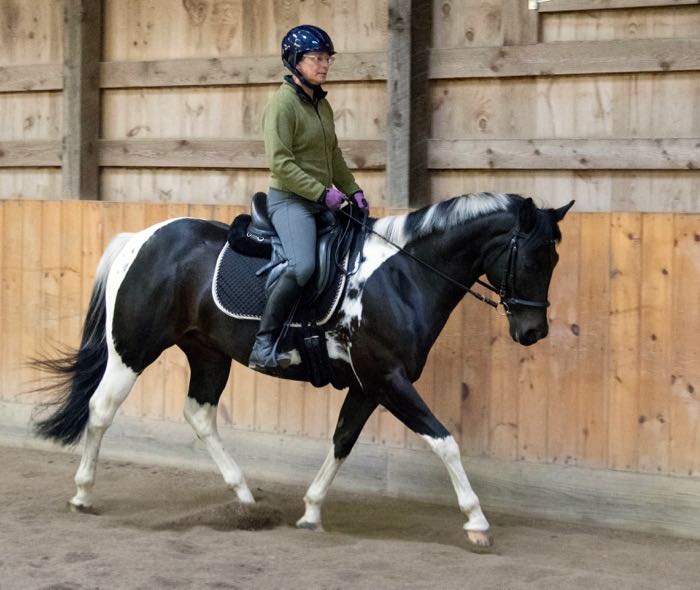
But it’s not always pretty.
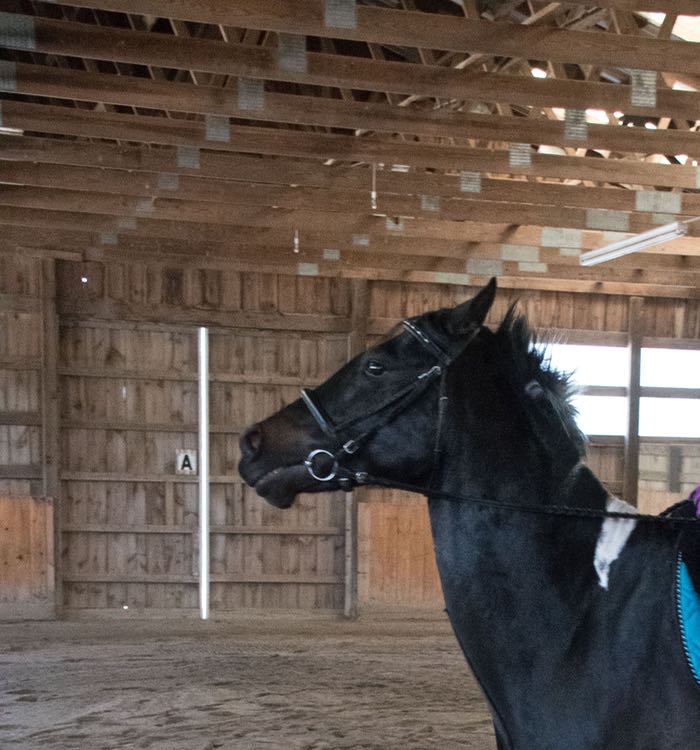
What matters is what you do at that moment.
Actually, what matters is how you think about that moment. If you think that your horse is being obstinate, oppositional, naughty, or dominant, then your response will be to escalate your demands. That will lead to a fight. You might be able to force the horse into a frame and get them to go where you want, but what you won’t have is a willing partner, and the ride won’t be much fun for either of you.
Instead, interpret that not-so-pretty moment as the horse communicating with you. The message is almost always, that hurts, or that worries me, or you’re too harsh, or I don’t understand.
The dressage that I do with Tonka is hard work. I’m asking him to become physically fit and balanced. I’m getting him to use muscles that go slack from a life in a paddock and stall. The exercise is paying off. Tonka feels good. He’s doing playful sprints around the paddock.

When I ride, he sets off with ground-covering strides. Two years ago, it took Tonka 13 steps of trot to go down the long side of the arena. Now it’s only 11, and he offers them with enthusiasm.
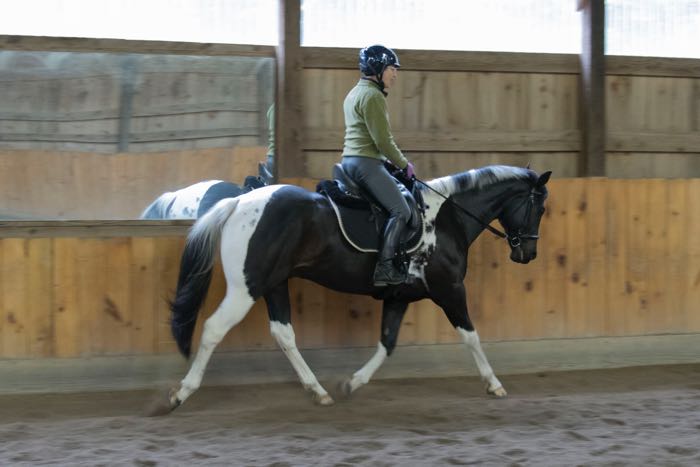
To get to that point, I had to ask him to go past his comfort zone. I get that exercise can be worrisome and challenging. I do a daily stretching routine. My shoulders have a small range of motion. For my own longterm health and mobility I have to work through discomfort. If I push myself too hard, I’m in pain for a couple of days, but if I don’t stretch, I get tighter and less mobile. I’m aware of the big picture and so I exercise despite how much I’d rather be doing something else. How do I get my horse to understand that the work that we do in the ring will give him longterm benefits? Unfortunately, that’s not a discussion that Tonka and I can have. But I can make our rides rewarding so that he’s an engaged and willing partner.
Riding is complicated. It’s two sentient beings attempting to go as one. We both have our limitations. When it doesn’t go so well I assess why. There’s always rider error. I go over a position checklist. Am I balanced, is my body in some way blocking him? Am I pulling when I should be giving, have I been clear about what I want, or is the horse confused? I evaluate the exercise itself. Have I asked for too much? Can he do it, but not for as long as I’m asking so that the behavior falls apart? Is there something else going on? A distraction?
When Tonka feels tense or when he’s moving short, I change the criteria. We go relaxed and forward. Get the kinks out. Enjoy the movement. Then we can get back to the more challenging frame.
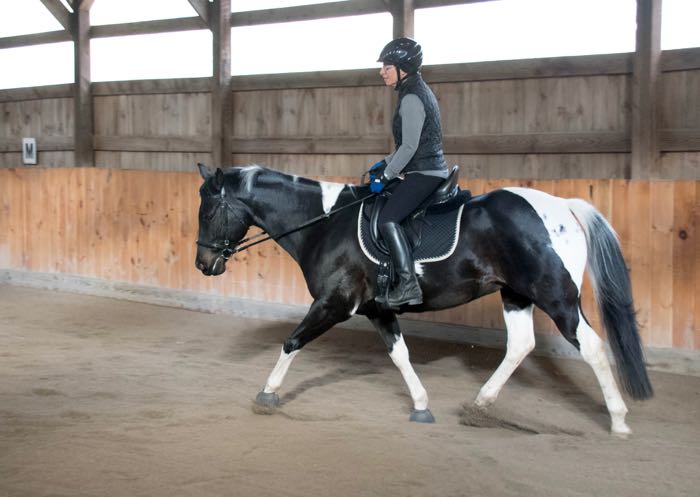
The other day we were working on the transition from trot to canter. Tonka was going beautifully at the trot. His poll (that part between and right behind his ears) was up, his jaw was soft, and he had suspension in the gait. Then I cued him to canter. Instead of stepping into it, he bucked!
(This photo shows the moment before a canter transition. Note the swishing tail. He’s telling me something!)
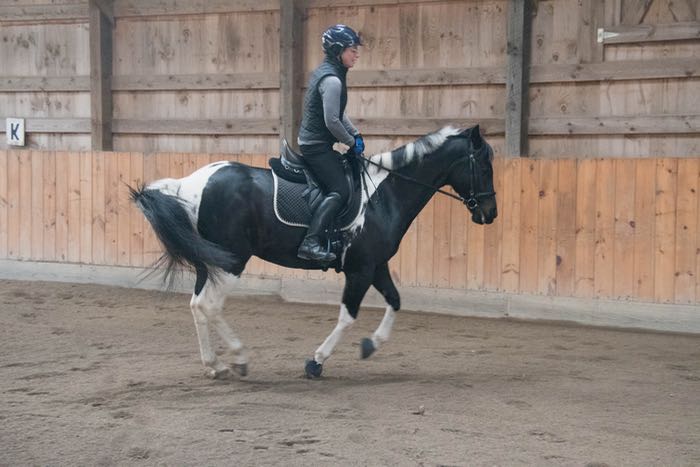
A buck could be interpreted as a reason to get after your horse and make him do it. But Tonka is an amenable guy. There was a reason why he didn’t want to do that transition and it wasn’t disobedience. It was me. Tonka isn’t yet as balanced at the canter as he is at the trot. That gorgeous trot that he was doing right before I asked for the canter was in a condensed frame. He couldn’t step from that into the canter. Tonka needed a little more stretch, a little more neck for balance. But I was riding him too tight. The buck was a clear message of frustration. I sent him a mental apology and put him into a relaxed stretch trot, and my good horse immediately put that not-so-pretty moment behind us. We tried again. This time my attitude and my hands were softer. Tonka went fluidly from trot into canter. It wasn’t the quality that we’ll need in the show ring, but it’s what is appropriate for now. I told him good boy and gave him a peppermint. He said, Let’s do it again. We did. And then we called it a day.



He is so beautiful, I know I have said that many times before but looking at those photos it’s impossible not to say it again. I love how you are so in tune with him and you are both learning all the time to make that partnership better and better. You are both so lucky to have each other and it is so lovely to follow all that you do.
I thought that I wouldn’t still be looking in so much after you had moved on from chickens, which are still my passion, but I have found that I am still looking in daily as always and finding your blog as interesting, entertaining and inspirational as ever.
Carol, I’m so glad that you’re still with me!
I loved this article. I have found that it is all feedback and not to get frustrated.
I’m glad that this blogpost resonated with you. We get frustrated. Our horses get frustrated. If we listen to what’s behind the frustration, we can stop that cycle, then it becomes communication that we can turn into something good. I’m sure your horse appreciates your attitude!
My mare was acting in a manner I don’t like on my last trail ride we went on, I tried to correct her and things didn’t work out, so the worse it got the more frustrated we both got. I know better than this. So my brain finally kicked in and I just let it go and we both settled down and the rest of the ride we both relaxed and enjoyed it.
I do really enjoy reading your blogs and comments.
Even when we know not to escalate, we do. It says something about your relationship with your horse that she relaxed when you did. That shows trust. Some horses stop listening to their riders because their riders don’t listen to them.
Clark Kent, indeed.